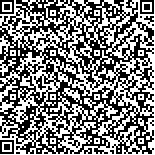| 引用本文: | THEKRA Khushafa,童侨,范磊,刘雪飞,黄新河.琥珀酸对酵母细胞转录组的影响[J].生物信息学,2018,16(3):156-162. |
| KHUSHAFA Thekra,TONG Qiao,FAN Lei,LIU Xuefei,HUANG Xinhe.Effects of succinic acid on transcriptome of saccharomyces cerevisiae[J].Chinese Journal of Bioinformatics,2018,16(3):156-162. |
|
| 摘要: |
| 寻找抗衰老活性小分子并研究其作用机制是衰老药物学研究的重点和热点。本文报道了一种新的抗衰老活性小分子琥珀酸,发现琥珀酸可以显著延缓芽殖酵母细胞的衰老并增强细胞的压力抗性。随后,利用DNA Microarray技术及生物信息学手段较系统分析了琥珀酸处理对基因表达谱、基因本体聚类及相关信号通路的影响。结果显示,琥珀酸处理对细胞转录组产生了显著影响,共导致3 485个基因的差异表达(P < 0.05),其中1 335个基因显著上调,2 150个基因显著下调。进一步对基因本体聚类及信号通路分析显示,线粒体及核糖体生物合成相关的分子功能、细胞组分、生物学过程和信号通路可能是琥珀酸作用的主要靶点,其他可能的作用靶点还包括蛋白酶体、细胞内吞、过氧化物酶体代谢及细胞自噬等。本研究为进一步阐明琥珀酸介导的寿命及压力调控机制提供了理论参考和研究线索。 |
| 关键词: 琥珀酸 寿命 压力抗性 转录组 芽殖酵母 |
| DOI:10.12113/j.issn.1672-5565.201802001 |
| 分类号:Q255 |
| 文献标识码:A |
| 基金项目:四川省科技厅应用基础研究项目(No. 2016JY0113),成都市科学技术局科技惠民计划(No. 2015-HM01-00047-SF),中央高校创新项目(No. 2682016CX099),中国大学生科研训练计划项目(No. 201710613066).” |
|
| Effects of succinic acid on transcriptome of saccharomyces cerevisiae |
|
KHUSHAFA Thekra, TONG Qiao, FAN Lei, LIU Xuefei, HUANG Xinhe
|
|
(School of Life Science and Engineering, Southwest Jiaotong University, Chengdu 610031, China)
|
| Abstract: |
| Looking for anti-aging compounds and studying their anti-aging mechanisms have become hot spots in the field of aging research. We reported for the first time that small molecule succinic acid (SA) significantly prolonged lifespan and increased stress resistance of Saccharomyces cerevisiae.Subsequently, effects of SA treatment on the transcriptome of wild type yeast were studied by using DNA Microarray assay and bioinformatics analysis. Overall results showed SA treatment produced significant effects on the transcriptome of wild type yeast, leading to 3485 differentially expressed genes (DEGs) (P<0.05) including 1335 up-regulated DEGs and 2150 down-regulated DEGs. Furthermore, gene ontology clustering and signaling pathway analysis showed both ribosome and mitochondrion-related cellular components, biological processes, molecular functions, and signaling pathways could be the main targets upon SA treatment, and proteasome, endocytosis, peroxisome, and autophagy-related cellular functions could be the potential targets upon SA treatment. Current study provides important references and valuable clues for further clarifying mechanisms for SA-mediated lifespan and stress resistance regulation. |
| Key words: Succinic acid, Lifespan, Stress Resistance, Transcriptome, Saccharomyces cerevisiae |






